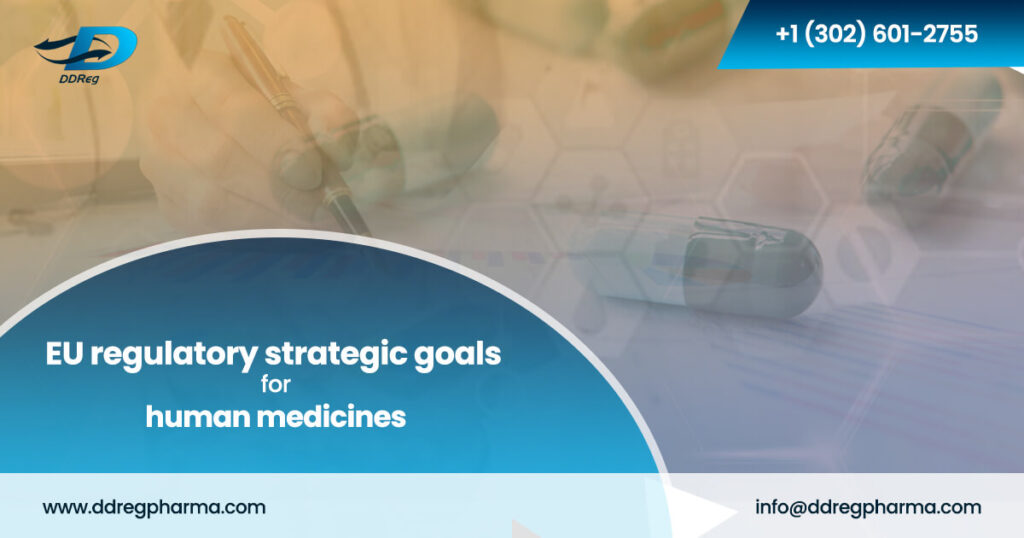The European regulatory system constitutes a network of pharmaceutical regulators from the European Economic Area (EEA), the European Medicines Agency (EMA), and the European Commission (EC). In addition to ensure that patients have timely access to safe, efficacious and high quality medicines, it is responsible for establishing a regulatory environment that keeps up with innovation. In line with this, EMA issued a EU regulatory strategic reflection that highlights the goals for ensure that the regulatory environment continues to deliver timely access to medicines regardless of emerging scientific challenges.
These goals were developed based on input from key stakeholders such as healthcare professionals, patient representative groups, European research and allied scientific organizations, regulatory exports, health-tech assessors, industry representatives, and more. Ultimately, 5 strategic goals, with core recommendations, were concluded for medicines authorized in the EU for human use to implement by 2025:
Catalyzing the integration of science and technology in medicines development
Integrating the most recent and new technology and scientific knowledge for drug development requires better collaboration between key stakeholders that would make sure that drug development and research plans are developed to address relevant and recent concerns. To do so, EMA aims to provide support in the following aspects: precision medicine and biomarker developments, transforming advanced therapy medicinal products (ATMPs) to patient treatments, priority medicine (PRIME) scheme, implementing novel manufacturing technology, combining assessment pathways for medical devices and in-vitro diagnostics, creating tailored regulatory responses to new material including nanotechnology and integrating better regulatory advice in drug development.
Driving collaborative evidence generation- improving the scientific quality of evaluations
Through this second goal, EMA aims to provide regulatory bodies with better information and evidence to enhance regulatory activities and operations as well as meeting the needs of other populations such as pediatric, rare orphan conditions and those diseases that lack sufficient treatment options. Much of this is driven by incorporating new technology and larger data particularly real-world data. This can be achieved by leveraging pre-clinical models, supporting new clinical trial developments and developing regulatory frameworks for the same, expanding the communication reach for benefit-risk ratio evaluation, focusing on special populations, and incorporating artificial intelligence for decision-making purposes.
Advancing patient-centered access to medicines in partnership with healthcare systems
In order to advance patient access to medicines, key stakeholders should be brought together to further build on existing frameworks. To achieve this goal, EMA looks to be more involved with and contribute towards how well-prepared health technology assessors (HTAs) are in taking decisions for innovative medicines that address unmet medical needs- whether that is enhancing communication between HTAs and EMA, or collaborating with them to identify priority pharmaceutical products & technologies. Furthermore, under big data, using real-world data for decision making and creating a network that facilitates engagement with and access to such big data, delivering product information electronically by allowing real-time engagement with SPC and PL and developing a sustainable electronic product information system would support advanced patient access to medicines.
Addressing emerging health threats and availability/therapeutic challenges
Enabling and leveraging research and innovation in regulatory science
European Medicines Agency. EMA Regulatory Science to 2025

